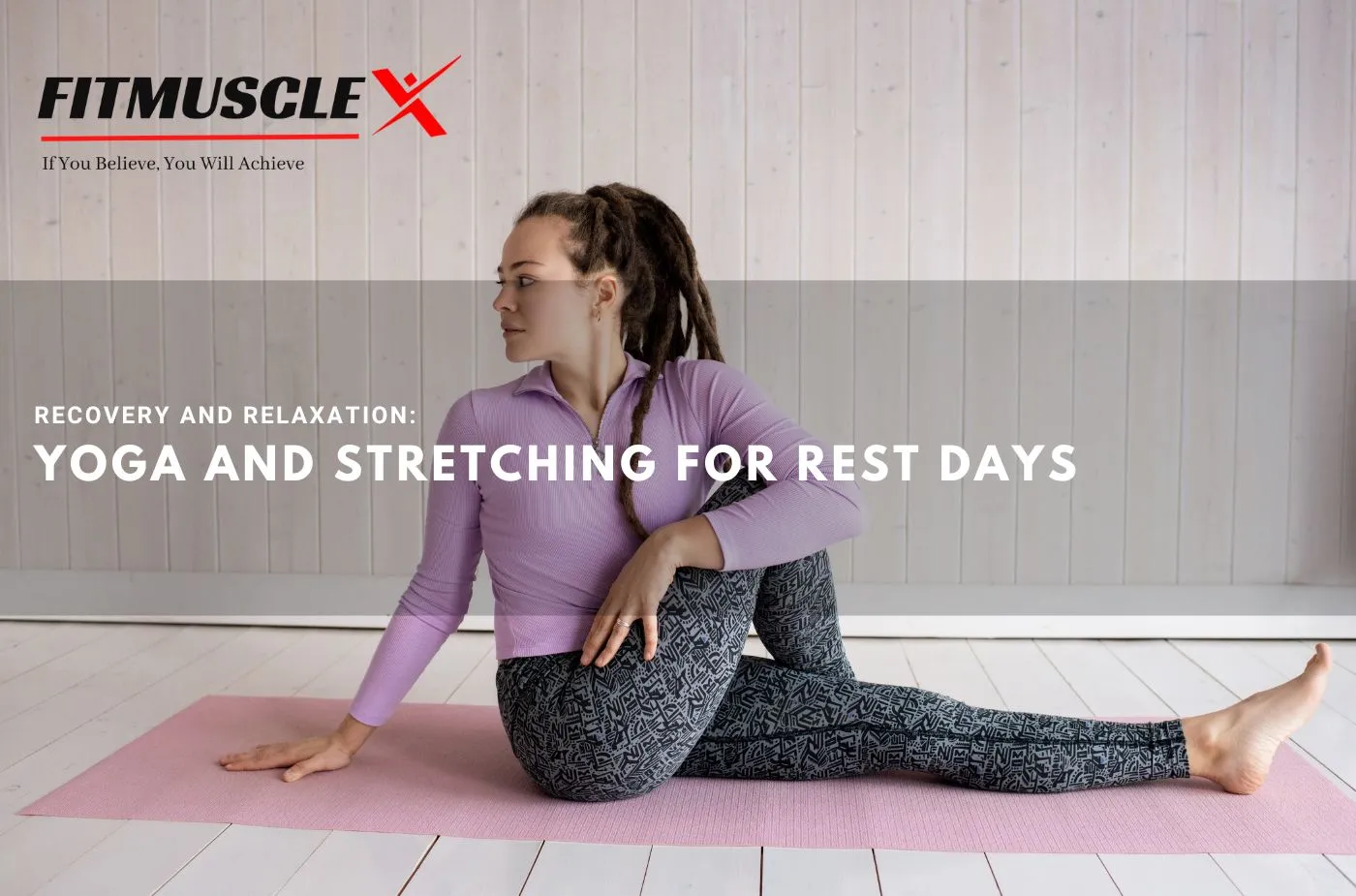In the increasingly demanding occupation, return power needs to be given a higher prominence that is, we get back to the job weary. Incorportioning yoga and Stretching into your training regime, even during your rest days, is very healthy to your body and mind whether you are a professional sportsman, a regular trainer or a person with a busy working schedule. In this blog, I will touch on various tricks, determined positives of poses for guards, and how to spend free time during a break as well as POSITIVES OF YOGA AND STRETCHING.
Taking a break from work has more benefits than one can think of in have had enough of his job.
Now, it is essential to consider the importance of relaxing or the rest days in the general scope of yoga and stretching. Stress caused by exercise whether it is through physical activity such as sports or exercises, vigorous or simple activities of daily life puts a strain on muscles and tendons. It cannot be disputed that physical activity is good for the human body, and necessary to provide for good health and sound mind; but sleep is when the human body recuperates and rejuvenates.
Thus, due to lack of sleep, our muscles get always tired with higher chances of getting injured, and hence our performances anyway reduce. In addition, over-exertion by athletes through continuous training and practice without adequate break session contributes to burnout, tiredness and overtraining syndrome. However, let’s not forget that it is necessary to combine intense workouts with complicated exercises that require maximum effort and strength, which is why it is important to include rest days into you workout routine and make it healthy.
Acknowledgements 2 Chapter 1 : Introduction to Yoga and Stretching 8 1.1 Definition of Yoga and Stretching 8 1.2 Background to the Study 13 Chapter 2: Literature Review 16 2.1 History of Yoga and Stretching 16 2.2 Yoga Styles and Stretching Techniques 29 Chapter 3: Methodology 35 3.1 Sampling Techniques 35 3.2
Yoga and stretching are two types of exercise that are supportive of each other in helping with recovering and relaxation. While they may not look like typical body-busting workouts even at their best, they have many advantages for anyone who engages in sports, especially on rest days. The following are some ways that yoga and stretching promote healing:The following are some ways that yoga and stretching promote healing:
1. Enhanced adaptability
Static movements such as when performing stretches and yoga poses in a way which slowly syllable dilate the muscles will assist you to have a better flexibility in the different muscles in your body. It has been established that flexibility in muscle increases the performance of athletes not only during exercise but also it puts the body on a reduced likelihood of incurring an injury.
2. Improved airflow:
Numerous yoga postures and stretching maps employ rhythmic and intentional breathing and optional motion to assist with blood circulation in the body. These changes help to increase the rate of blood flow to the muscles, hence aid in nourishing the muscles and also helps in oxygenation.
3. Relieving Stress:
For example, regulating of breath or pranayama, being attentive or vigilant, and practicing meditation are some key features that lead to the eased condition of the physical and psychological aspect in yoga. These activities assist in lowering general stress and the ability to relax the mind by encouraging the body to switch to the parasympathetic nervous system.
4. Recovering Muscles:
It is also very useful in doing after an extremely hard training session since it comprises a vital role in the elimination of kinks within the muscles, I think that no one does not know that stretching is one of the mains tools for quick muscle relaxation and recovery. Furthermore, there are some of the yoga positions that are unique in the way that it has a direct bearing in that it’s some of the vitamins that some of the muscles are allowed to relax or be built up.
5. Clarity of Mind:
Yoga in the English language refers to a way through which people are trained to feel and interiorize the body, and also a way through which the mind is trained to be put on hold. It is good for both energy and the soul, as relaxation is equally important for the body and the mind during the organizational days of rest.
Yoga and Stretching Techniques for Off-Days
Let’s talk about the benefits first, then have a look at some specific yoga and stretching positions that are great for recuperation days:
1. Calm Yoga Flow:
A mild yoga flow helps release tension and promote relaxation with slow, deliberate movements and deep breathing. Focus on postures that extend the major muscular groups, such as forward folds, hip openers, and gentle twists. Pay close attention to your breathing and any physical feelings you experience as you work through each pose.
2. Yoga for Restorative Care:
Healing and soothing are the roles of restorative yoga and sometimes it can be referred to as restful yoga. You will use bolsters, blankets, and blocks for support and practice passive back bending during this style of practice. Forward leaning of the pose ensures that the body gets to relax for long enough to flush out stress within it. For relaxation pose get into the healing positions such as legs up the wall pose, supported Savasana, and supported Child’s Pose.
3. Yin Yoga:
Connective tissue is emphasized in Yin and it comprises of tendons, ligaments and tissues. Holds are sustained for 5-7 minutes, and with each hold transition, the muscle is fully released and stretched. Yin yoga always works on connective tissues, which helps with joint mobility and flexibility in case you decided to take a day off and recharge yourself.
4. Rolling in foam:
Efficient foam rolling, also referred to as self-myofascial release, is another independent technique for relieving muscle tension and increasing muscle elasticity. And that is easy as pressing a button to roll it over the problematic areas like calves, hamstrings, quadriceps and back. Perform the roll slowly and with uniformity while taking your time to hit hard and even apply pressure on the areas that seem to be tight or in pain.
5. Extending dynamically:
Moving or rhythmic stretching enables the gradual stretching and warming up of muscles by taking the body through activity. Static stretching, on the other hand, involves contracts the muscle and stretching the contracted muscle for an elongated period of time, contrary to dynamic stretching that aims at enhancing flexibility and mobility through movement. To make your body ready and active, use, arm circles, twist from the stomach, and leg swings during your rest day exercises.
Essential Tips on Using Rest Days to the Maximum
To make the most of your rest days and hasten your recovery, consider using the following suggestions:To make the most of your rest days and hasten your recovery, consider using the following suggestions:
1. Take beverages and consume meal Carbohydrate foods: Popcorn, crackers, cereal, bread, cookies, cakes and candies ADVERTISEMENT Up-to-Date Articles About Health, Fitness, and Nutrition
As much as it is important to provide nourishment to the soul, it is equally important to feed your body appropriately and ensure that it gets enough water to help heal itself. Closely related to the glycogen replenishment concept, it is crucial to consume enough clean and healthy meals together with water throughout the day to fill up glycogen depots and to synthesize muscle protein.
2. Make sleep a priority.
Good quality mattres is necessary to enjoy sound slumber and good health.
Inability to sleep or remain asleep through the night and good health are two things that many people wish for but very hard to come by. Ideally, get to bed at night aiming to sleep for about 7 to 9 hours to allow your body ample time in which to relax and heal itself.
3. Pay Attention to Your Body:Pay Attention to Your Body:
It is also important to heed your body’s signs when switching between an exercising- and rest day, so adapt your rest day schedule. If you are one of those who feel r疲 to the bones or achy sometimes, you might want to switch to moderate stretching or restorative yoga instead of hitting the gym.
4. Include mindfulness:
Take note of which daily habits make you feel happy and satisfied so that you can maintain good physical and mental health. Sometimes try to find ways to reduce stress and feel rejuvenated, for example, write a few lines on a piece of paper, try meditation, or even, for instance, a walk in nature.
5. Maintain uniformity:
Progress here is possible thanks to the consistency of the work and overall therapeutic procedures and activities. Maintain your routine and try incorporate rest days in your schedule and ensure you stick to it just like how you perform your exercises. Trust and believe that your performance in your job as well as your health in the long run will gradually get better when you get the amount of sleep your body needs.
In summary
In a world you find yourself in where the ideal is always being busy and active, the role of relaxation is underrated. This is a good piece of advice that every working person should learn – sometimes it is good to take a few hours to relax and rest. Proprioceptive neuromuscular facilitation (PNF) stretching and yoga can assist it to increase flexibility and relaxation as well as support the healing process on rest days. Well the next time you feel like continuing with your strain when you feel like your strength has ben depleted or when you feel like not taking your rest day off at all you should remember that sometimes the best thing that your body requires is to let it rest.





2 thoughts on “Stretching and Yoga for Recuperation and Relaxation on Rest Days”